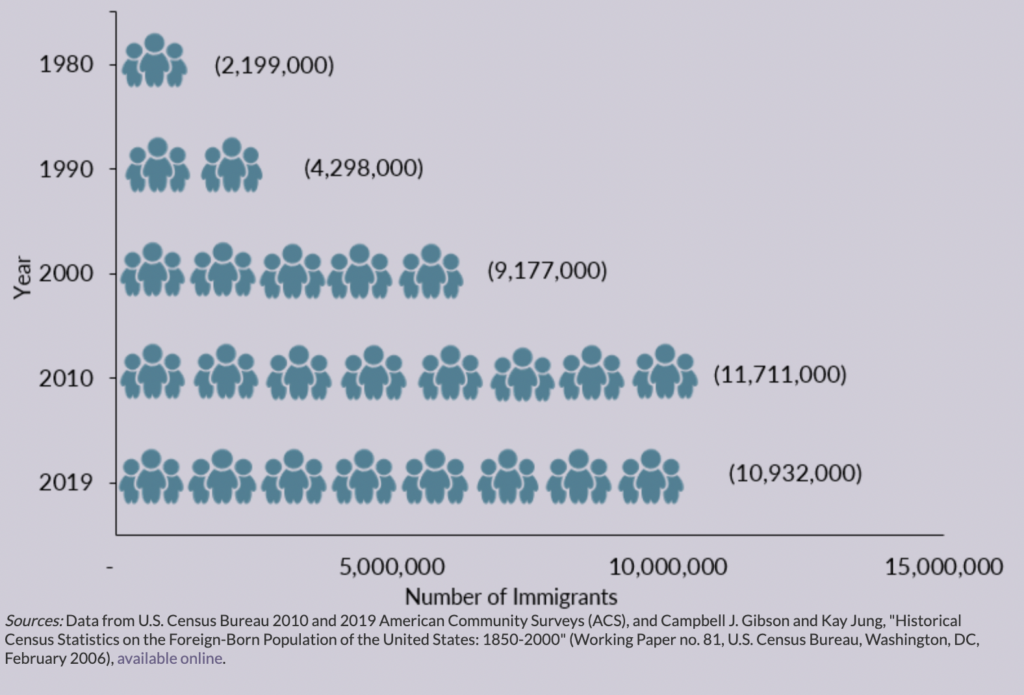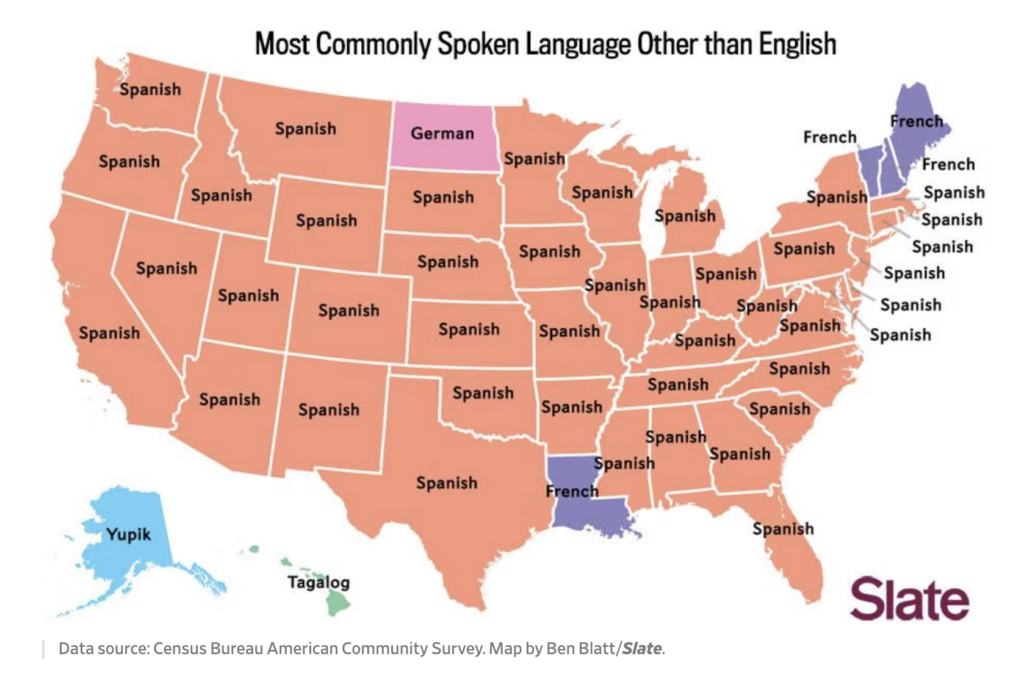
Spanish Language in the USA
Imagine your friend comes over to your house and offers you a box of cookies of a brand name you have never heard of, saying, “These are the best new cookies out there!” Would you believe your friend, or would you want some more facts to back up a statement like that? The purpose of this blog post is to invite ourselves over to your digital screen and claim that “Spanish is a very important language in the United States of America and only increasing in popularity” and back it up with some hard data.
Fact 1 – Spanish was in the USA Before English
Christopher Columbus, an explorer sent from Spain, arrived on the shores of North America on October 12, 1492. Kickstarting an explosion of exploration, the Spaniards continued to send explorers to the ‘new world’ to scout out the land for centuries. Their expeditions and settlements left behind a lasting linguistic and cultural legacy that influences our culture today.
Fast forward a few hundred years between the end of the 19th century and the beginning of the 20th, and history shows millions of Spanish people migrating to the USA in search of work and a new start for their families, bringing along their language, culture, and community.

Photo credit – https://www.migrationpolicy.org/article/mexican-immigrants-united-states-2019
Fact 2 – Spanish Continues to Grow in Popularity
Not only did the Spanish language take root here in the 16th century, but has continued to grow in popularity and influence like branches on a tree. To back up our cheesy metaphors, here’s some real data:
- 53 million Hispanic people live in the US (17% of the American population)
- 38.3 million people speak Spanish as a primary language at home (excluding the 3.6 million Spanish native speakers in Puerto Rico)
- 45 million Hispanic people can speak Spanish as a first or second language
- 6 million Spanish language learners
Fact 3 – Spanish Doesn’t Show Signs of Slowing in the USA

The Spanish language (and culture) has found a home here in the USA, and many predict that it will only grow, rather than diminish. Studies predict that by 2050, one in three people in the U.S. will speak Spanish (this data includes bilingual people who also speak English), perhaps for some of the following areas of influence:
- Education: Approximately 8,200 Spanish language programs currently offered at high schools across the United States (American Councils for International Education, 2017). This is not counting online language programs, Spanish camps, programs for students younger than high school age, and programs for adults.
https://www.forbes.com/sites/soniathompson/2021/05/27/the-us-has-the-second-largest-population-of-spanish-speakers-how-to-equip-your-brand-to-serve-them/?sh=40db5c5a793a
- Religion: A large percentage of Spanish speakers in the USA associate themselves with the Catholic religion. At roughly 22% of the population of the United States, Catholicism is the largest religious denomination in the country with approximately 77.4 million members as of 2017.
- Culture and Traditions: Hispanic celebrations like Cinco de Mayo and Dia De Los Muertos (Day of the Dead) are days that most people in the US know of and many celebrate. Hispanic art, literature, music, and other artforms continue to inspire and educate people around the world and in the US today.
For all of the above reasons and more, the Spanish language has been an old friend of the USA and is here to stay for centuries to come. Start your journey of learning Spanish with Cultural Bytes and become a part of this rich heritage and before you know it, it will become a part of you.









